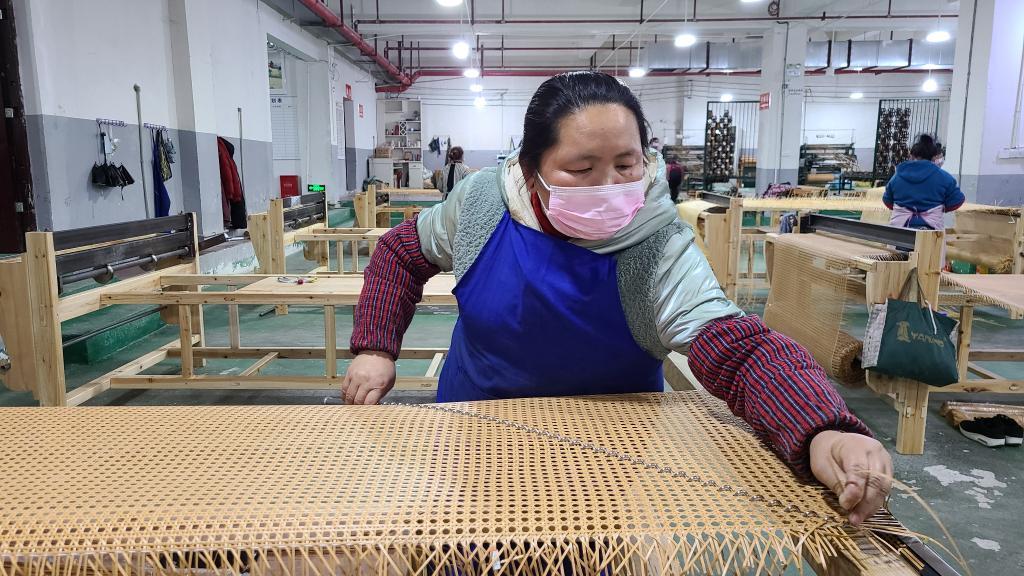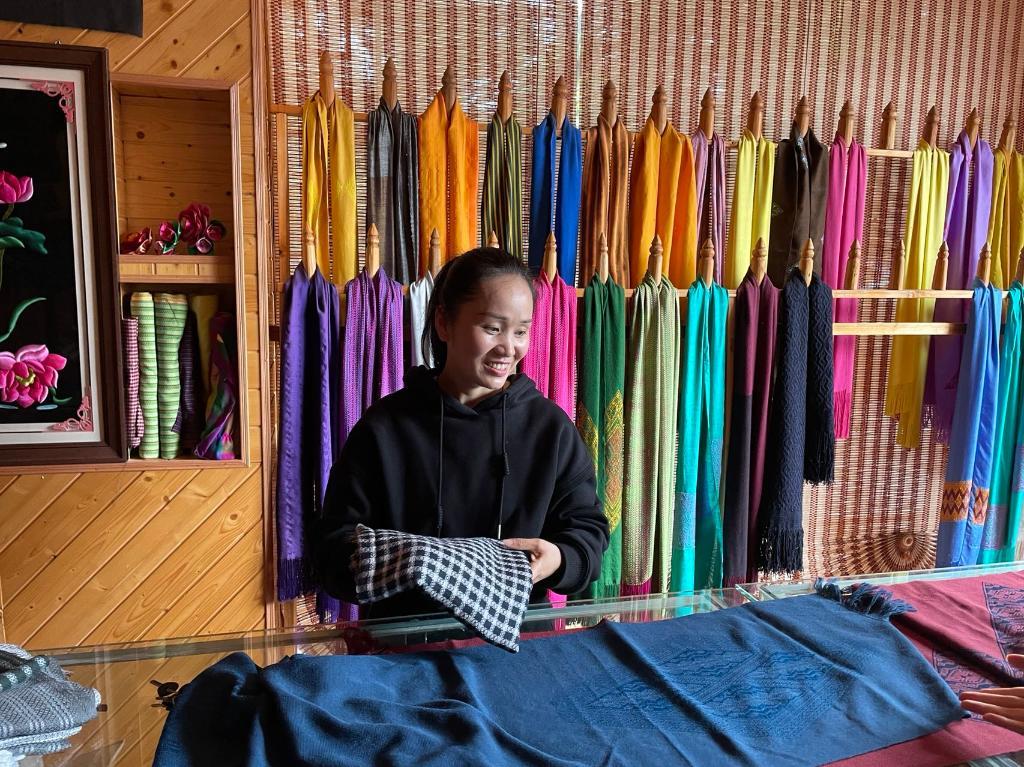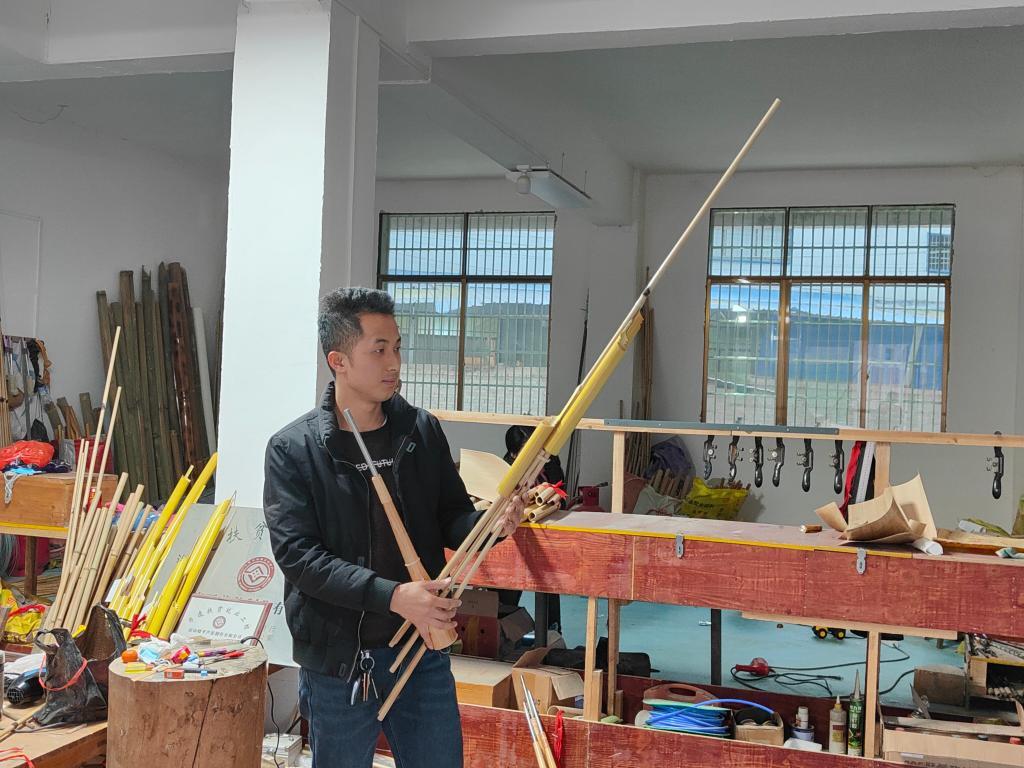Leishan, Guizhou: Knock on the door of prosperity and happiness with traditional skills of intangible cultural heritage
Located in Leishan County, Qiandongnan Miao and Dong Autonomous Prefecture, Guizhou Province, it has intangible cultural heritage such as "Miao Embroidery" and "Miao Nian". In the process of inheritance and protection, Leishan has developed intangible cultural heritage resources into industries, helping people to increase their incomes and helping rural revitalization.
Wear a mask, sleeves, put on an apron, pass the iron drill through the hole, hook the imitation rattan to one end of the iron drill, pull it back, and the imitation rattan will be fixed with the movement of the iron drill. In the Lahua area of the Hongxin Crafts Processing Factory in Leishan County, workers are weaving eye damas with imitation rattan in front of the knitting machine.

A worker is weaving eye tat in a factory.
"Our products can be used for partitions, ceilings, and decorations. Last year, the total output value was about 8 million yuan." Yang Guochao, the founder of the processing factory, is the county-level non-genetic inheritor of rattan weaving in Leishan County. The craft has changed from the "eating craft" passed down from generation to generation into a real industry.
In 2018, Yang Guochao and his wife returned to their hometown to start a business. They brought a few villagers in their hometown to start weaving flowers. That year, they brought more than 50 registered poor households into employment. Yang Guochao introduced that at present, there are more than 100 people going to work in the factory every day, and the workers with the most piece-rate wages per month can get more than 6,000 yuan, and the average salary is about 4,200 yuan.
Walking into the store of Jinji Embroidery Co., Ltd. next to Tonggu Square in Leishan County, small square scarves with Miao embroidery, scarves decorated with brocade patterns, and embroidered canvas bags in "small fresh" style come into view. Different from other ethnic clothing stores, the products in this store are extraordinarily "foreign".
"Most of them are improved products, which are more suitable for the national market." The owner Gan Xiaozhi said that he hoped that things with national characteristics will attract more people in the future and integrate the Miao cultural elements into their lives.

Gan Xiaozhi is showing reporters the Miao embroidered scarves in the store
Gan Xiaozhi built an employment workshop in the ex-situ poverty alleviation and relocation community, and also built a research base in the village. She said: "We have 35 fixed workers, and we have an average of 200 jobs every year."
The reed is a traditional musical instrument of the Miao nationality. In Leishan, festivals are inseparable from the wonderful melody of the reed. Yu Xiaoping, who lives in Yanzhai Village, Datang Town, Leishan County, is a "post-90s" Miao reed maker and a county-level representative inheritor of the Miao reed production skills in Leishan County.
When Yu Xiaoping was young, he followed his teacher to learn the craftsmanship of reeds. Now, Yu Xiaoping is engaged in the production of traditional Miao mango tube reeds in the family workshop business model, and the products are mainly sold to Miao villages in Leishan and surrounding areas.

Yu Xiaoping is holding the reed that is about to be made.
Yu Xiaoping said that the most difficult part of reed production is making copper sheets and tuning. Over the years, I have devoted myself to research and finally solved the problems of the sound quality and pitch instability of the reeds. Now, the reeds he produces are of good quality and crisp sound quality, and the products are in short supply. Many customers from neighboring counties came directly to order Lusheng, and the family was very busy.
Traditional techniques are helping more people knock on the door to prosperity and happiness. Since 2018, Leishan County has built more than 50 intangible cultural heritage workshops, 20 of which have been included in the list of the first batch of intangible cultural heritage poverty alleviation and employment workshops in Guizhou Province. According to incomplete statistics, the continuous development of traditional techniques has directly or indirectly led more than 5,000 people to participate in production and increase their income.
 渝公网安备 50010702504639号
渝公网安备 50010702504639号